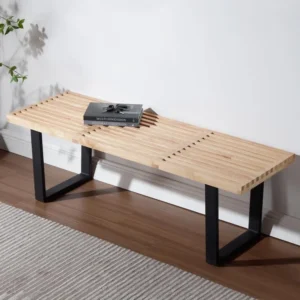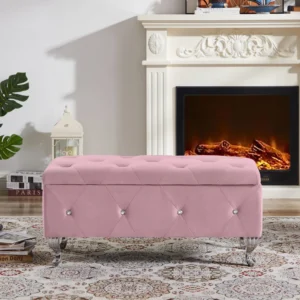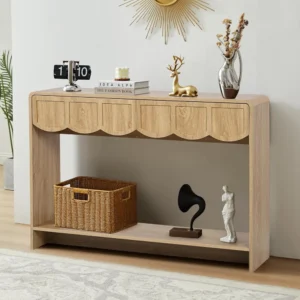Introduction: The Essence of Minimal Benches in Modern Design
Minimal benches represent the perfect marriage of form and function in contemporary design. With their clean lines, uncluttered surfaces, and emphasis on essential elements, these pieces embody the “less is more” philosophy that defines modern interiors. A truly minimal bench strips away excess ornamentation, leaving behind only what serves a purpose while maintaining an undeniable visual appeal.
In recent years, these streamlined seating options have become cornerstone pieces in contemporary spaces, and for good reason. Their versatility allows them to transition seamlessly between roles – from practical seating to display surface to architectural element. In smaller homes and apartments where space efficiency is paramount, minimal benches offer maximum functionality without overwhelming visual weight.
The connection between minimalist design philosophy and contemporary living runs deep. As our lives become increasingly complex, many seek to create homes that feel like sanctuaries of simplicity and intentionality. Minimal benches perfectly reflect this desire, offering both utility and aesthetic clarity in equal measure.
Throughout this guide, we’ll explore the various materials that excel in minimal bench design, smart placement strategies for different rooms, styling approaches that maintain minimalist integrity, and much more. Whether you’re furnishing a sleek urban loft or adding thoughtful elements to a more traditional space, understanding the principles behind modern bench styles for small spaces will transform how you approach this versatile furniture piece.
Understanding Minimalist Design Principles for Contemporary Furniture
Minimalist design is guided by several core principles that have profoundly shaped contemporary furniture. The philosophy that “form follows function” means every element must serve a purpose – there are no purely decorative flourishes. This principle is perfectly embodied in minimal benches, where each component exists for a specific reason, whether it’s structural support or ergonomic necessity.
The famous architect Ludwig Mies van der Rohe’s motto “less is more” captures the essence of minimalist design – the idea that simplicity creates impact more effectively than complexity. Minimal benches demonstrate this by making bold statements through carefully considered proportions and honest materials rather than excessive details or ornamentation. When selecting furniture for contemporary spaces, quality always trumps quantity, with emphasis placed on craftsmanship and durability over accumulation.
Contemporary spaces themselves tend to feature open layouts, uncluttered surfaces, and thoughtfully curated items. These environments prioritize breathing room, allowing each piece to be appreciated individually while contributing to the cohesive whole. The characteristics of sleek benches for modern entryways – with their horizontal planes and visual lightness – complement these spaces perfectly, creating a sense of openness even in smaller areas.
Minimal benches draw inspiration from influential design movements like Scandinavian modernism, with its focus on craftsmanship and natural materials, and Japanese minimalism, which emphasizes harmony and negative space. These influences have shaped contemporary interpretations that feel both timeless and current. For those working with limited square footage, modern minimalist benches for small spaces provide solutions that maximize function without dominating visually.
Essential Benefits of Incorporating Minimal Benches in Your Space
Minimal benches offer remarkable versatility in contemporary interiors. Beyond their primary function as seating, they can serve as:
- Display surfaces for books, objects, or small plants
- Room dividers in open-concept spaces
- Landing spots for daily essentials in entryways
- Functional sculpture that defines the character of a room
This multifunctionality makes minimal benches particularly valuable in today’s homes, where adaptability is prized. In compact living environments where every square foot counts, these streamlined pieces provide necessary function without the visual bulk of more traditional furniture. Their clean silhouettes create the appearance of more space, allowing rooms to “breathe” visually.
Perhaps one of the most compelling benefits of minimal benches is their ability to create visual breathing room. Unlike heavily ornamented furniture that demands attention, minimal pieces allow the eye to rest, contributing to a sense of calm throughout the space. This quality makes them especially valuable in high-traffic areas like entryways or in busy households where visual simplicity offers welcome relief.
The timeless quality of minimal design means these benches resist dating in the way that more trendy pieces might. A well-crafted minimal bench can easily transition through evolving interior styles over many years, making it a wise investment. Furthermore, minimal benches demonstrate remarkable design continuity, complementing various interior approaches from warm modernism to industrial aesthetics. For specific ideas on integrating these pieces, exploring modern entry bench decor ideas can provide practical inspiration for your space.
Strategic Placement: Where to Position Your Minimal Bench
Entryway Elevation
The entryway presents perhaps the most natural home for a minimal bench. In this transitional space, a bench creates a functional drop zone for daily comings and goings while establishing the design tone for the rest of the home. Allow approximately 36 inches (91 cm) of clearance in front of the bench to ensure comfortable navigation. For smaller entryways, consider benches between 36-48 inches (91-122 cm) wide to provide adequate seating without overwhelming the space.
Living Room Integration
In living areas, minimal benches offer supplementary seating that can be easily repositioned as needed for gatherings. Place a bench perpendicular to your primary seating arrangement to create a conversational L-shape, or position it along a wall as an elegant perching spot. The visual lightness of minimal benches makes them particularly valuable in living rooms, where they add function without the heaviness of additional armchairs.
Dining Area Applications
Minimal benches offer space-saving alternatives to traditional dining chairs, particularly along one side of a rectangular table. This arrangement maximizes seating capacity while maintaining an uncluttered appearance. Allow approximately 12 inches (30 cm) between the bench seat and table underside for comfortable dining posture. The clean lines of minimal benches complement various table styles while providing flexible seating capacity.
Bedroom Utility
At the foot of a bed, a minimal bench creates a functional transition zone perfect for putting on shoes or placing tomorrow’s outfit. In larger bedrooms, position a minimal bench near a window to create an impromptu reading nook. The standard height for bedroom benches is typically 18 inches (46 cm), aligning with standard mattress heights for visual harmony.
Hallway and Transitional Spaces
Narrow hallways and transitional areas benefit enormously from thoughtfully placed minimal benches. In these spaces, benches typically ranging from 12-15 inches (30-38 cm) deep provide functional pausing points without impeding traffic flow. Consider the extensive options available in our modern entryway bench collection to find proportions that work perfectly in these connecting spaces.
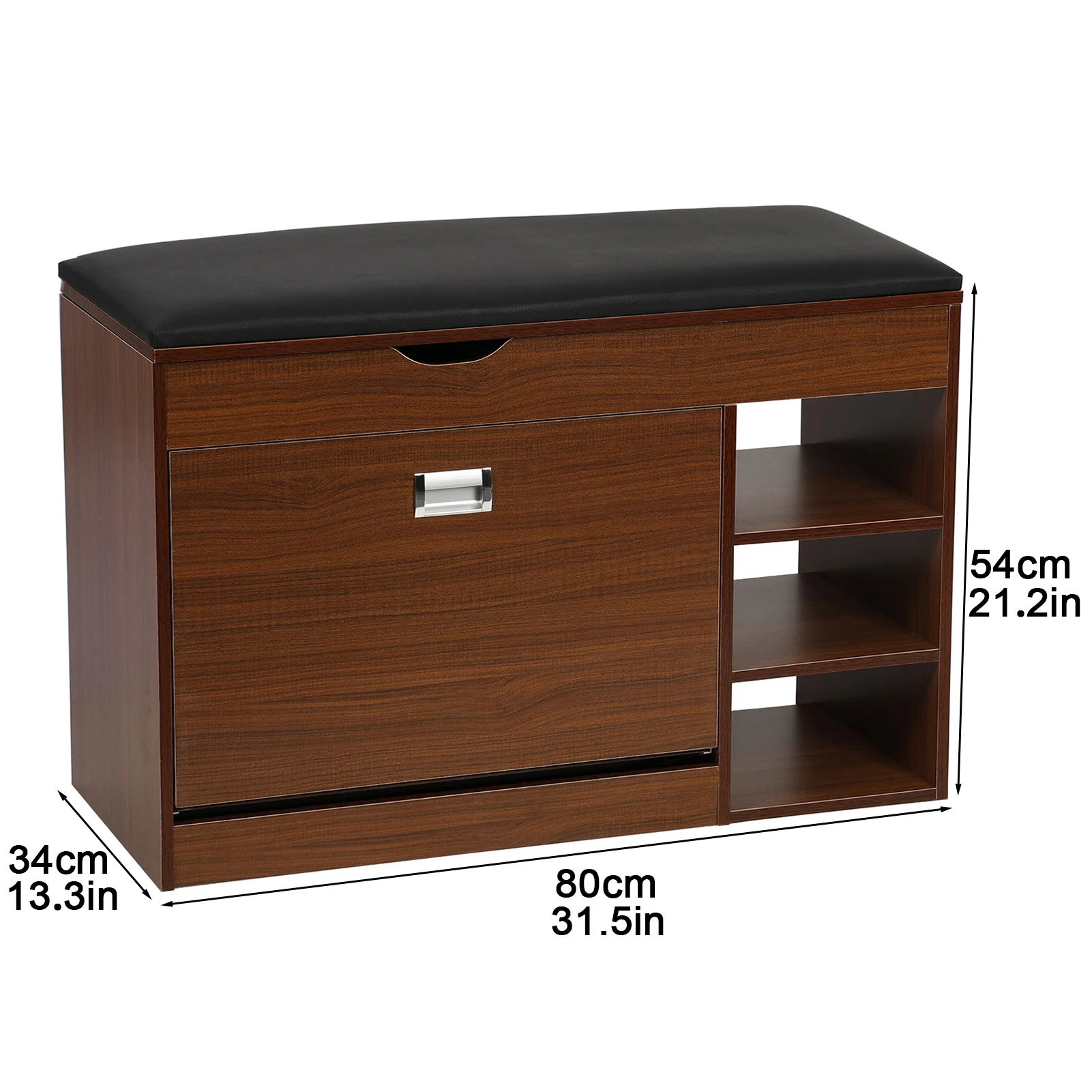
Material Selection: Finding the Perfect Match for Your Space
Wood Options
Wood remains a perennial favorite for minimal benches, offering warmth and natural character within a contemporary context. Each wood type brings distinct qualities:
Oak: Known for its prominent grain pattern and exceptional durability, oak benches develop a beautiful patina over time. Light oak varieties complement Scandinavian-inspired spaces, while darker finishes work well in more traditional environments.
Walnut: With its rich chocolate tones and straight grain, walnut offers sophisticated warmth. Its natural color variation adds subtle interest without overwhelming minimalist design. Walnut requires occasional oiling to maintain its luster but ages beautifully.
Ash: Lighter than oak with a distinctive grain pattern, ash provides excellent strength-to-weight ratio. Its pale coloration brightens contemporary spaces while its resilient nature stands up to daily use.
For sustainable choices, look for FSC-certified woods and water-based finishes that minimize environmental impact. The wood entryway bench options in our collection showcase how this timeless material can be interpreted through a contemporary lens.
Metal Varieties
Metal benches bring architectural precision and visual lightness to contemporary spaces:
Steel: Offering unparalleled strength, steel benches can feature remarkably thin profiles while maintaining structural integrity. Powder-coated finishes in neutral tones like matte black, white, or gray complement minimalist aesthetics while providing durability.
Aluminum: Significantly lighter than steel, aluminum benches work well in spaces that require occasional repositioning. Its natural corrosion resistance makes it suitable for areas with moisture exposure.
Brass: Adding warmth through its golden tones, brass develops a living patina that evolves over time. This material brings subtle luxury to minimal designs without sacrificing contemporary appeal.
Metal benches require minimal maintenance beyond occasional dusting, though brass may need specific polishing to maintain its appearance if a patinated finish isn’t desired.
Upholstered Options
Upholstered minimal benches balance comfort with clean design:
Bouclé: This textured fabric adds tactile interest while maintaining visual simplicity through neutral coloration.
Performance fabrics: Stain-resistant options like Crypton or Sunbrella translate minimalist aesthetics into practical family spaces.
Natural linens: These provide organic texture and breathability while aging gracefully over time.
When selecting upholstered minimal benches, consider removable covers for cleaning flexibility, particularly in high-traffic areas like entryways.
Mixed Materials
The most dynamic minimal benches often combine materials thoughtfully:
- Wood frames with metal legs create visual tension between warmth and precision
- Stone or concrete tops paired with wooden bases balance weight with warmth
- Upholstered seats on metal frames add comfort without visual heaviness
These combinations maintain minimalist principles while adding subtle visual interest through material contrast.
Innovative Materials
Contemporary design continues to explore innovative materials for minimal benches:
Concrete: Offering sculptural possibilities with industrial appeal, concrete benches bring unexpected texture to minimalist spaces.
Terrazzo: This composite material incorporates stone fragments in a polished surface, adding subtle visual interest while maintaining clean lines.
Acrylic: Creating the illusion of weightlessness, clear or tinted acrylic benches add contemporary edge while visually enlarging smaller spaces.
These materials typically require specialized care but reward with distinctive presence in contemporary interiors.
Iconic Minimal Bench Styles for Contemporary Settings
Scandinavian-Inspired Designs
Scandinavian minimalism has profoundly influenced contemporary bench design with its emphasis on light woods, organic forms, and practical functionality. These benches typically feature tapered legs, gentle curves, and impeccable joinery that showcases craftsmanship rather than concealing it. Natural finishes highlight wood grain while maintaining a light, airy aesthetic. The balance of visual delicacy with structural integrity makes these pieces particularly suitable for minimalist benches for small entryways where space optimization is essential.
Industrial Minimal
Industrial minimal benches embrace raw materials and honest construction while eliminating superfluous details. Featuring exposed metal frameworks, often in blackened steel or brushed aluminum, these pieces celebrate structural elements as their primary aesthetic. Wood components tend to be substantial and minimally processed, often showing natural edge details or visible joinery. The straightforward approach of industrial minimal designs makes them particularly adaptable to various interior styles, from warehouse conversions to modern apartments.
Japanese Minimalism
Japanese-influenced minimal benches embody the concept of “ma” – the meaningful absence of unnecessary elements. These designs feature exceptionally clean lines, precise joinery, and low profiles that create a grounded, meditative quality. Materials tend toward the natural and understated, with woods like cypress or cedar treated to enhance their inherent characteristics rather than conceal them. The meticulous craftsmanship and attention to proportion make these benches stand out despite – or perhaps because of – their restraint.
Contemporary Luxury
Contemporary luxury minimal benches maintain clean silhouettes while incorporating refined materials and subtle details. Think precision-cut marble bases supporting slim upholstered seats, or bench frames with architectural metal inlays that catch the light. These pieces demonstrate how minimalism doesn’t necessitate austerity – thoughtful material selection and immaculate execution create pieces that feel simultaneously restrained and indulgent.
Architectural Minimal
Some minimal benches transcend pure furniture to become architectural elements in their own right. These statement pieces often feature unexpected proportions, cantilevers, or monolithic forms that command attention through their structural boldness rather than decorative elements. Materials like cast concrete, bent steel plate, or sculptural wood create benches that function as art objects while remaining eminently usable.
Size and Scale: Selecting the Right Dimensions for Your Space
Selecting the appropriate bench dimensions ensures both visual harmony and practical functionality in your contemporary space. For entryways, the standard height range of 16-19 inches (40-48 cm) provides comfortable seating while aligning with typical console tables. Width should be determined by available wall space, with most entryway benches measuring between 36-60 inches (91-152 cm). Depth typically ranges from 14-18 inches (35-46 cm), providing adequate seating without protruding too far into circulation paths.
For living areas, bench height should coordinate with surrounding seating, typically 17-19 inches (43-48 cm). Living room benches often run longer, sometimes extending to 72 inches (183 cm) or more to create substantial presence. Dining benches should align precisely with table height, with 18 inches (46 cm) being standard seat height and length matching or slightly shorter than the table side they accompany.
In smaller spaces, proportion becomes especially crucial. A bench should occupy no more than 60-70% of the available wall space to avoid an overcrowded feeling. For compact areas, our small entryway bench collection offers appropriately scaled options that maintain visual lightness while providing essential functionality.
When considering scale relative to surrounding furniture, minimal benches should establish visual relationships without matching exactly. For example, a bench positioned near a sofa might echo its seat height while contrasting in material or visual weight. This creates cohesion without uniformity, a hallmark of sophisticated contemporary design.
Styling Your Minimal Bench: Accessories and Context
Styling a minimal bench requires a thoughtful approach that enhances rather than undermines its inherent simplicity. Consider these principles for maintaining minimalist integrity while adding personal touches:
Create asymmetrical balance: Rather than centering objects perfectly, offset them slightly for a more relaxed, contemporary feeling. A stack of books positioned at one end might balance with a sculptural object at the opposite end.
Embrace negative space: Allow portions of the bench to remain entirely empty. This “breathing room” is an essential component of minimalist styling that prevents visual clutter.
Layer textures thoughtfully: Add depth through textural contrast rather than pattern. A single cashmere throw or linen cushion introduces warmth without visual noise.
Select objects with intention: Choose accessories that serve either functional or meaningful purposes. A beautiful basket for storage or a sculptural vessel with personal significance adds value beyond mere decoration.
Seasonal updates can maintain minimalist principles while reflecting changing conditions:
- Spring/Summer: Introduce subtle natural elements like a single branch or small arrangement of seasonal blooms
- Fall/Winter: Add warmth through textural textiles in neutral tones or a simple lantern for ambient light
When creating vignettes on or around minimal benches, maintain editorial discipline. Ask whether each element truly enhances the composition or merely adds clutter. Those looking to maximize function in smaller areas should explore modern seating for small foyers for additional space-conscious styling approaches.
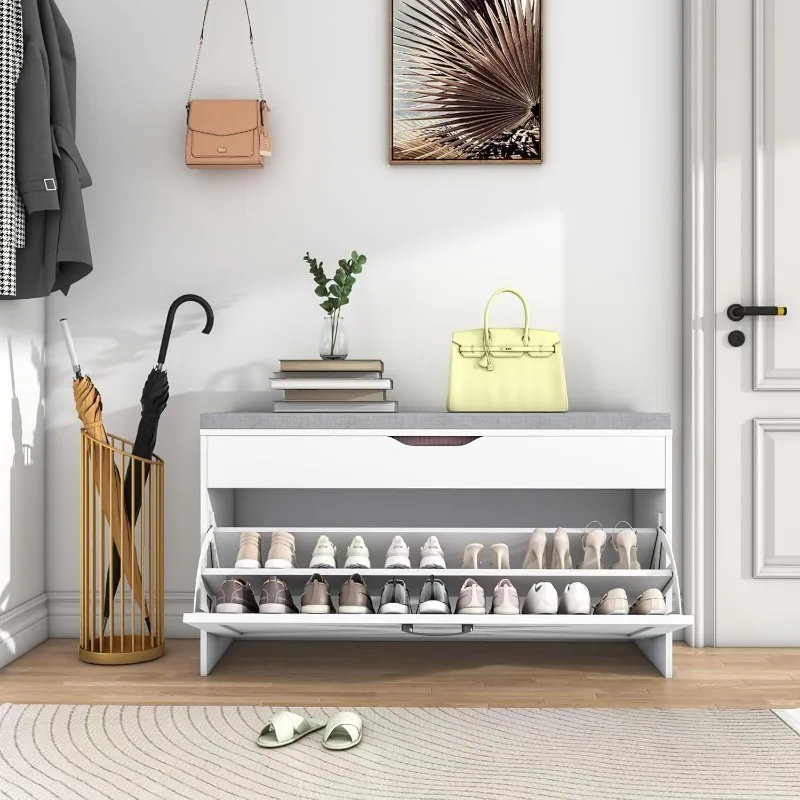
Creating Visual Harmony: Pairing Minimal Benches with Other Furniture
The versatility of minimal benches allows them to integrate seamlessly with various furniture styles, creating cohesive interiors that transcend strict categorization. When pairing with modern furniture, look for shared characteristics like clean lines or similar material finishes to establish connection points. For traditional spaces, minimal benches offer refreshing counterpoints to more ornate pieces, creating dynamic tension that enlivens both elements.
Material coordination creates subtle unity throughout a space. Consider how the metal finish on a bench might echo hardware elements elsewhere in the room, or how wood tones can relate to flooring or other wooden furniture pieces. These connections need not be exact matches – in fact, slight variations often create more sophisticated results.
Scale relationships between benches and companion pieces significantly impact visual harmony. A minimal bench paired with substantial furniture benefits from slightly increased scale to maintain presence, while more delicate surrounding pieces call for benches with corresponding visual lightness. For spaces with specific dimensional constraints, narrow entryway bench options provide solutions that maintain proper scale relationships while accommodating spatial limitations.
Color harmony extends beyond the bench itself to its relationship within the overall room palette. Minimal benches in neutral tones provide versatility, while those in accent colors should reference other elements in the space to avoid appearing disconnected. The bench can serve as either a supporting element that blends harmoniously or as a thoughtful contrast that adds energy to the composition.
Entryway Bench with Back, Modern Entryway Bench, Shoe Bench for Entryway
Price range: $463.13 through $474.44 Select options This product has multiple variants. The options may be chosen on the product pageCorner Entryway Bench, Entryway Bench with Cushion, Modern Entryway Bench, Shoe Bench for Entryway
$476.34 Select options This product has multiple variants. The options may be chosen on the product pageModern Entryway Bench, Wood Entryway Bench, Wood Mudroom Bench
$497.69 Select options This product has multiple variants. The options may be chosen on the product pageEntryway Bench with Cushion, Small Entryway Bench
$466.79 Select options This product has multiple variants. The options may be chosen on the product pageFarmhouse Entryway Bench, Modern Entryway Bench
$1,514.84 Select options This product has multiple variants. The options may be chosen on the product page- Price range: $785.40 through $897.63 Select options This product has multiple variants. The options may be chosen on the product page
Quality Markers: How to Identify Well-Crafted Minimal Benches
Despite their apparent simplicity, minimal benches reveal their quality through thoughtful details and construction methods. When evaluating craftsmanship, examine these key indicators:
Joinery precision: Look for tight, clean joints where components meet. In wooden benches, traditional joinery methods like dovetails or mortise-and-tenon connections signal superior construction compared to visible screws or staples.
Material consistency: High-quality minimal benches feature carefully selected materials with consistent grain patterns in wood or even finishes in metal. This attention to material selection demonstrates craftsmanship before construction even begins.
Edge treatment: Edges should be consistently finished, whether crisp and precise or intentionally softened. Run your hand along edges to detect any irregularities that might indicate hasty production.
Weight and stability: Quality minimal benches have appropriate heft for their materials and feel solidly planted without wobbling. Test stability by applying gentle pressure to different areas.
Finish quality: Superior finishes appear even and properly applied, protecting the material while enhancing its natural characteristics. Look for smooth, consistent surfaces without drips, bubbles, or uneven coloration.
Sustainability considerations: Well-crafted pieces increasingly incorporate sustainable practices like responsibly sourced materials, low-VOC finishes, and production methods that minimize waste.
These quality markers are particularly evident in benches that incorporate functional elements, such as those in our entryway bench with drawers collection, where precision becomes especially important for operational components.
Where to Find Exceptional Minimal Benches
The search for the perfect minimal bench can lead to various retail environments, each offering distinct advantages. Design-focused furniture retailers curate collections that emphasize contemporary aesthetics and quality construction, often providing expert guidance in selecting pieces that complement existing interiors. These establishments typically showcase benches in contextual settings that help visualize how they might function in your own space.
Independent furniture makers and artisans represent another valuable source for minimal benches with distinctive character. These craftspeople often bring specialized expertise in particular materials or techniques, resulting in pieces with exceptional attention to detail and unique qualities not found in mass-produced alternatives. Many operate their own studios or participate in design markets where you can discuss custom options.
Online marketplaces have transformed furniture discovery by connecting consumers with specialized makers and curated collections from around the world. The best platforms provide detailed specifications, multiple images showing different angles, and verification systems for reviewing quality. When purchasing minimal benches online, carefully review dimensions and material descriptions to ensure appropriateness for your space.
Vintage and secondhand sources offer unexpected treasures for those willing to search. Mid-century pieces in particular often embody minimalist principles that remain relevant in contemporary settings. When exploring these options, focus on structural integrity and adaptability rather than perfect condition, as minor refurbishment can often restore these pieces to their former glory.

Investment Considerations: Budgeting for Your Minimal Bench
When budgeting for a minimal bench, understanding the factors that influence price helps establish reasonable expectations. Material selection significantly impacts cost, with solid hardwoods and premium metals typically commanding higher prices than engineered wood products or standard steel. Similarly, handcrafted pieces with traditional joinery methods require more skilled labor than mass-produced alternatives, reflecting in their price.
Entry-level minimal benches in simple materials can provide clean contemporary style at accessible price points, though construction quality and material thickness may reflect the lower investment. Mid-range options typically offer substantial improvements in material quality and construction durability, often representing the sweet spot for value-conscious consumers seeking lasting pieces. Premium minimal benches feature exceptional craftsmanship, superior materials, and design provenance that contribute to their investment value.
When evaluating minimal benches across price ranges, consider the cost-per-use factor. A bench that serves multiple functions – seating, storage, display – distributes its cost across these various uses. Similarly, pieces with timeless design that will transition through multiple homes or interior updates offer better long-term value than trend-focused alternatives.
For those requiring additional functionality beyond seating, exploring entryway bench with storage options might provide the multi-functional value that justifies a higher initial investment.
Maintenance Essentials for Different Bench Materials
Wood Care
Wooden minimal benches benefit from regular but simple maintenance to preserve their natural beauty:
- Dust weekly using a soft, slightly damp cloth, following the direction of the wood grain
- Every 3-6 months, apply appropriate wood conditioner or oil to prevent drying and cracking
- Immediately wipe up any liquid spills to prevent staining or water damage
- Protect from direct sunlight which can cause uneven fading over time
- Use coasters under decorative objects to prevent marks or finish damage
For specific wood types, adjust care accordingly – oiled walnut requires different treatment than sealed maple or oak surfaces.
Metal Maintenance
Metal components in minimal benches typically require minimal upkeep:
- Regular dusting prevents buildup that can lead to surface scratching
- For smudges on stainless steel, wipe with a microfiber cloth dampened with water
- Brass elements may develop patina over time – embrace this evolution or use specialized brass cleaners for restoration
- Touch up any chips in powder-coated finishes promptly to prevent corrosion
Upholstery Care
Fabric elements need consistent attention to maintain appearance:
- Vacuum regularly using upholstery attachments to remove dust and prevent particle buildup
- Treat stains immediately according to fabric type recommendations
- Consider scotchgard-type protectors for high-traffic seating areas
- Rotate cushions if removable to ensure even wear
Specialized Materials
For benches featuring innovative materials:
- Concrete surfaces benefit from periodic sealing to prevent staining
- Acrylic requires non-abrasive cleaners specifically formulated for plastic surfaces
- Terrazzo should be maintained with pH-neutral cleaners to protect both stone and binding agents
Proper maintenance ensures your minimal bench remains both beautiful and functional for years to come, protecting your investment while preserving its aesthetic integrity.
Frequently Asked Questions About Minimal Benches
Is a minimal bench comfortable for extended seating?
While minimal benches prioritize clean lines over plush comfort, many contemporary designs incorporate ergonomic considerations through subtle seat contouring or thoughtfully angled backrests. For longer seating sessions, consider minimal benches with slim cushions or upholstered tops that maintain visual simplicity while enhancing comfort. Even completely wooden or metal benches can provide surprising comfort when proportions are carefully considered.
Can minimal benches provide adequate storage solutions?
Yes, many minimal benches ingeniously integrate storage without compromising aesthetic cleanliness. Look for designs with hidden compartments beneath flip-up seats or sleek drawers that maintain clean lines when closed. These multifunctional pieces are particularly valuable in smaller homes where every square foot must work efficiently.
How do I ensure a minimal bench doesn’t look too stark?
Balance is key when integrating minimal benches into livable spaces. Consider material warmth (wood tones or subtle upholstery) to offset geometric simplicity. Strategic styling with a single textural element like a small throw pillow or carefully chosen objects nearby can also soften the overall effect without sacrificing minimalist principles.
What’s the ideal height for a minimal bench?
Standard bench height ranges from 17-19 inches (43-48 cm), aligning with typical chair seating. However, benches intended primarily for momentary use, such as in entryways, sometimes measure slightly higher at 19-21 inches (48-53 cm) to facilitate easier standing and sitting. Always consider the bench’s primary function when evaluating appropriate height.
Are backless benches practical for main seating areas?
Backless minimal benches work best as supplementary rather than primary seating in living spaces. Their open design makes them ideal for situations requiring access from multiple sides, such as conversation groupings or spaces where furniture may need frequent reconfiguration. For areas where extended seating comfort is essential, combine minimal benches with backed seating options.
The Future of Minimal Bench Design: Emerging Trends
The evolution of minimal bench design continues with exciting developments that maintain minimalist principles while embracing innovation. Sustainability has moved beyond trendy marketing to become a fundamental design consideration, with manufacturers exploring biodegradable materials, closed-loop production systems, and designs that facilitate eventual disassembly and recycling. These approaches satisfy growing consumer demand for environmentally responsible furniture without compromising aesthetic quality.
Multifunctionality continues to advance in minimal bench design, with new interpretations that transform between functions without complex mechanisms that would contradict minimalist principles. Simple gestures – a surface that rotates to reveal storage, a component that slides to extend functionality – allow these pieces to adapt to changing needs while maintaining visual clarity.
Material exploration brings fresh perspectives to minimal bench design through unexpected combinations and innovative applications. Recycled plastics transformed into sophisticated surfaces, agricultural waste converted into durable composites, and traditional materials used in novel ways all expand the vocabulary of minimal design while maintaining its essential principles.
Perhaps most intriguingly, technological integration is finding its way into minimal bench design without disrupting minimalist aesthetics. Wireless charging capabilities embedded invisibly within surfaces, subtle lighting elements that activate through touch, and materials that respond to environmental conditions represent the thoughtful incorporation of technology that enhances function without demanding visual attention.
Conclusion: The Timeless Appeal of Minimal Benches in Contemporary Design
The enduring appeal of minimal benches in contemporary spaces stems from their remarkable ability to balance form and function without compromise. By distilling seating to its essential elements, these pieces create visual calm while fulfilling practical needs – a combination increasingly valuable in today’s visually overwhelming world. Their versatility allows them to adapt to evolving interior styles while maintaining their fundamental character.
Rather than approaching minimalism as rigid restriction, successful minimal bench design demonstrates how thoughtful reduction can actually expand possibilities. By eliminating the unnecessary, these pieces focus attention on quality materials, precise proportions, and the subtle details that distinguish exceptional design. This balanced approach creates pieces that feel intentional rather than austere.
As you consider incorporating a minimal bench into your own space, select options that align not only with your aesthetic preferences but also with your daily routines and functional requirements. The most successful minimal pieces reflect both the physical spaces they occupy and the lives of the people who use them. In this harmony between object, space, and inhabitant lies the true power of minimal design – creating environments that support and enhance our experience rather than merely decorating it.
Through their honest materials, purposeful forms, and versatile applications, minimal benches demonstrate how contemporary design at its best goes beyond visual trends to create pieces that remain relevant and beautiful across time. This timelessness represents perhaps the most sustainable aspect of minimal bench design – creating objects of lasting quality that need not be replaced as styles evolve.




